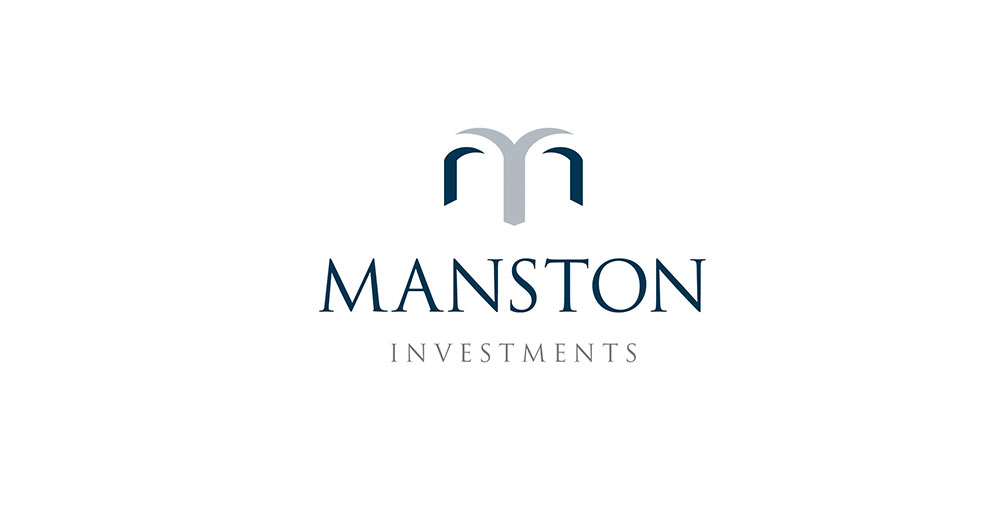This is the first in what we hope will be a series of ‘thought pieces’ covering the UK commercial real estate sector, the Manston team’s views and what we see as some of the key elements affecting the market at the moment.
—
In today’s dynamic UK real estate market, the mid-market segment of commercial property offers a compelling case for outperformance over the next five years, we believe, particularly for the prudent, hands-on and long-term investor.
At Manston, our opinions are increasingly clear: with interest rates elevated above the past 10 or so year trend (albeit at closer to what we might consider economic ‘normal’), yields recalibrated and occupiers increasingly selective as to quality and aware of the market, there is the opportunity for investors who are disciplined, patient, hands-on and strategic.
This article seeks to set out the rationale, the market backdrop, the differentiating levers and the execution challenges that shape why we believe mid-market UK commercial real estate is well placed to perform well in the 2025-2030 cycle.
The Market Backdrop: Repricing, Income and Yield Spreads
Since the 2020-22 period of ultra-low interest rates and subsequent ‘frothy’ valuations, the UK commercial property market has entered a phase of repricing – both overall and at an asset-specific level. Prime yields widened markedly as debt costs surged and investor risk appetites adjusted. According to UBS, after an extended period of elevated yields and uncertainty, the outlook for UK commercial real estate yields is looking stable, with potential for small but sustained yield compression in both the retail and industrial segments, rather than further yield shock.¹ Meanwhile, recent data from CBRE indicates UK all-property total returns to mid-2025 were tracking at circa 8 %+ (on an annualised basis in favourable sub-sectors).²
At the same time, the spread between long-dated gilt yields (and swap rates) and property yields has narrowed significantly, eroding some of the mid-historic cushion that real estate investors enjoyed.³ That means sectors and assets with weaker fundamentals or structural issues will face headwinds – but conversely, well-managed, mis-priced assets with strong income fundamentals have the potential to generate outsized returns as the cycle turns.
Why Mid-Market Offers Strategic Advantage
Why place a particular emphasis on the mid-market — broadly speaking assets below the large & very largest institutional “prime” trophy size, yet with strong fundamentals and cashflow visibility? We see four key advantages:
1. Less efficient markets, more alpha potential. In the large ticket, prime end of the market, much of the pricing reset has already taken place and plenty of investors are watching the same deals. By contrast, the mid-market offers greater dispersion of pricing, less bidding competition, and more room for value-add or repositioning strategies. UBS highlights that “asset selection accounts for ca. two-thirds of the tracking error in returns” in UK commercial real estate.¹ In simple terms: the differential between winning and average deals is greater.
As a corollary to this – we see the best potential for generating these alpha driven returns not only existing in the ‘sub-prime’ sphere, but also above the ‘micro’ cap of say sub-£1m deals, where there exists the potential for irrationality and differing economic requirements amongst investors who are not institutional or sophisticated in nature, and are investing for different reasons – e.g. owner occupiers, small SIPP investors, etc.
2. Income focus in a higher-rate regime. With interest rates remaining elevated relative to recent prior cycles, many investors are placing greater emphasis on yield and income rather than purely capital growth. According to Morgan Stanley’s global real estate outlook, the next several years “will represent an attractive investing vintage as real estate markets typically experience above-average returns following periods of downward re-pricing”.⁴ Mid-market assets, particularly those with long-dated leases, indexation and low capital expenditure requirements, match that income-first mindset.
3. Structural tailwinds in less crowded sectors/submarkets. Many mid-market assets sit in secondary or regional locations where structural supply-demand imbalances are emerging but not yet fully priced. For example, under-capitalised suburban office parks, multi-let regional industrial estates, or service-driven assets (such as pubs, retail parks) that benefit from inflation-linked income. These sub-markets, when combined with careful asset and tenant selection, can carry less volatile lease turnovers and less exposure to the “headline risk” seen in large office towers or central London trophy assets, with different relationship and economic dynamics.
4. Timing and optionality. Cycles are rarely linear. The mid-market often has greater optionality: whether through re-letting, estate rationalisation, portfolio re-positioning, or sale at a later cycle inflection point. Since much of the heavy repricing in prime assets may be behind us, the mid-market still retains scope for multiple uplift drivers (reversionary rent, rental growth, cap-rate compression) that prime markets may not.
When investing in a conservative manner – we adhere to the maxim that we are looking to ensure optionality in our assets – if the prevailing use becomes unattractive, what are our options for the asset? Likewise – we believe that whilst timing of acquisitions and disposals cannot be ignored, it is ultimately ‘time in the market, rather than timing the market’ that delivers excess returns, when combined with a willingness to ‘get involved’ in active management.
Our Five-Year View: 2025-2030
Looking ahead, here are our key expectations for how this segment may perform:
- Income return will dominate early cycle returns.Given the elevated cost of capital environment, we expect the yield component of total return to play a relatively larger role in the next 2-3 years. Rental growth should layer in over time. CBRE reported that income returns remain the main driver of total returns in H1 2025, with capital value uplift still relatively modest.²
- Yield compression—on a selective basis—not broad market. We do notexpect a broad reversion to the heady 2014-15 yield levels. Rather, in the mid-market (especially, if not exclusively, where leasing risk is limited and asset quality high) we expect selective cap-rate tightening. UBS note “we do not expect any major yield movements” overall, but that “asset selection is king” in unlocking return upside¹. This view chimes with the Manston house view that we invest not in overall markets, but in specific tangible assets, each with their own specific investment rationale and story.
- Rental growth to matter.With new supply constrained in certain markets, base-line ESG requirements rising (making many older assets unattractive), and tenant preferences shifting, certain asset types and specifications will benefit from rental reversion and escalations. Carter Jonas report that industrial and retail sub-sectors posted annual capital growth of 5.2 % and 3.3 % respectively to August 2025.⁵
- Higher dispersion of outcomes. We anticipate the divergence between well-positioned mid-market assets and those unable to differentiate (which may struggle) will widen further. In short, idiosyncratic and non-systemic risk matters more than ever. It has always been at best a mere heuristic, and now becomes a downright fallacy to look at ‘the market’ as a whole, rather than as a collection of non-homogenous, non-fungible, individual assets.
What to Look for and Where to Focus
Given this outlook, the following key elements should form the investment checklist:
1. Lease structure & indexation. Long lease lengths, credible indexation (CPI or RPI-linked) and strong covenant security materially improve income visibility and risk mitigation. Income certainty becomes more valuable when debt costs are high and cap-rate margin is compressed.
2. Location and supply discipline. Even in the mid-market segment, the “good location” premium still holds firmly in place. We favour assets in markets where occupier fundamentals are positive, supply is limited and access to infrastructure (labour, logistics) is strong.
3. Capital expenditure requirements. The cost of achieving modern ESG compliance, de-carbonisation, and tenant-led fit-outs is rising. Assets requiring limited CAPEX or where the funding plan is clear and contextual returns & security story is established up-front are far better placed than those where CAPEX is uncertain or open-ended. Such CAPEX should be clearly targeted at ‘market level’ requirements, rather than ‘single tenant’ specific projects with limited alternate use potential.
4. Asset management optionality. Mid-market assets often offer reversion opportunities: under-rented leases, multi-let estates where active management can unlock value, a refurbishment play, or a repositioning to ‘Plan B’ use. The ability to do more than “buy and hold” is a meaningful lever when seeking to drive alpha against the overall market – as investors, Manston are not a passenger of their investments, but a driver of them.
5. Debt & structure discipline. In a higher-rate environment, low leverage or interest-rate hedged structures are highly beneficial. Even small increases in debt cost can erode returns significantly. The relative value of mezzanine or flexible financing also increases. Lenders are selective and credit-terms matter more.⁶
Why the Time Is Right
Three overlapping conditions make now an opportune moment for mid-market UK commercial real estate:
A. The repricing has largely occurred, downside risk reducing. Many sectors and assets have seen significant value adjustment since 2022. According to RICS, the UK commercial market may have “bottomed out”, and yield spreads have begun to narrow.³ With valuations stabilising or showing signs of recovery in selected sectors, the asymmetric risk returns are becoming more favourable. Whilst significant structural challenges remain (either having already arisen, or existing in potentia) – we believe that the fundamentals are solid.
B. Structural occupier trends favour certain sub-markets. Whether it is the logistics distribution push, regional office demand tied to hybrid work, retail parks benefiting from click-and-collect, or solar roof-asset overlay strategies — secular shifts underpin demand for many mid-market assets, if the correct ‘story’ is sought out in asset selection terms.
C. Inflation and income growth alignment. With CPI running elevated and likely to stay above target for some time, assets with inflation-linked leases or with strong rent reversion potential provide an invaluable hedge at a portfolio level. Real estate remains one of the few asset classes where cashflows can adjust rapidly with inflation.
Risks and Mitigants
No investment view is complete without an assessment of risks. For the mid-market UK commercial real estate proposition, the key risks include:
- Interest rate risk and cost of debt: If rates remain higher for longer than anticipated, debt servicing costs and refinancing risk may squeeze returns. Mitigation: use conservative gearing, hedging, focus on assets with strong income coverage.
- Obsolescence and structural change: Some assets may suffer from tenant demand shifts, technological change or ESG obligations. Mitigation: invest in assets with modern, flexible layouts, good location, and plan for CAPEX as part of the acquisition due-diligence.
- Illiquidity and valuation risk: Commercial real estate remains less liquid and secondary assets may trade at discounts. Mitigation: ensure purchase price reflects illiquidity, hold for medium-term (5-10 yrs), maintain exit optionality. Given the illiquid nature of property – thought needs to be given the liquidity premium delta between direct investment, and the liquid indirect investment route through quoted instruments.
- Macro slowdown and occupier performance: A sharp UK economic downturn could limit rental growth and heighten leasing risk. Mitigation: focus on sub-markets with diversified demand, strong covenants and structural tailwinds. Consider counter- or a-cyclical industries as part of the overall tenant mix.
Conclusion: Patience, Discipline and Mid-Market Edge
To those reading from a long-term investment perspective, the mid-market segment of UK commercial real estate is increasingly attractive. The three-phase cycle of high cost of capital, repricing and stabilisation is now giving way to selective capital deployment opportunities backed by rising income, yield recovery and structural tailwinds.
At Manston, the emphasis remains on “buying the right asset, at the right structure, with the right optionality” rather than chasing the outperformance of the last cycle. The next 5 years are unlikely to replicate the low-rate, yield-compression boom of the past, but instead reward income clarity, asset management excellence and thematic alignment. Mid-market assets, executed well, can deliver returns that outperform the broad market average. We expect that the combination of yield stability, rental growth and optionality will enable us—and our partners—to capture that outperformance.
In short: the cycle is turning. The returns won’t be handed out easily, and the winners will be those who heed the fundamentals, stay disciplined and focus on real estate as a long-term business. But for those who get it right, the mid-market UK commercial real estate segment offers a rare and timely opportunity.
Footnotes
- Margeirsson, O. (2025) “UK commercial real estate yields: Exploring the ups and downs ahead”, UBS Asset Management Global Real Assets, 17 April.
- CBRE Research. (2025) UK Real Estate Market Outlook Mid-Year Review 2025, August 1.
- RICS. (2025) “RICS survey calls the bottom of the UK commercial real-estate market as yields harden across all sectors”, 24 March.
- Morgan Stanley Real Estate Investing (MSREI). (2025) “CRE Bright Spot within Murky Macro Backdrop”, July.
- Carter Jonas. (2025) “Commercial Market Outlook – August 2025”, 9 October.
- Cushman & Wakefield. (2025) “Conviction Points for Entry into EMEA Commercial Real Estate”, 29 July.




